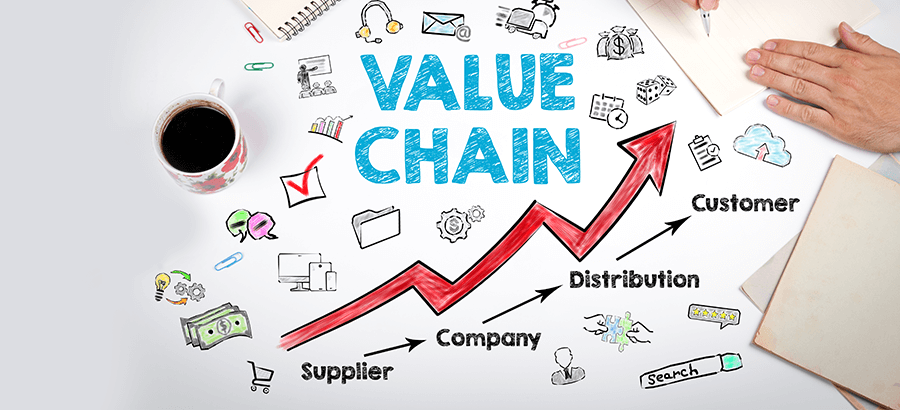Have you ever looked down at something you are using and wondered about how it came to be? How it transformed from several unconnected elements into one cohesive product?
The term ‘value chain’ was first coined by strategy doyen and Harvard Business School professor, Michael Porter in the early ‘80s. While its functional definition describes the sequence of events that take raw materials to finished goods, the value chain consists of much more than just coordinated processes through which products flow smoothly to the consumer.
It takes the right people doing the right things to make customers genuinely happy. Managing value chains is complex. Individuals with different skills need to work together to achieve a unified goal: on-time-in-full delivery at minimum cost.
And the right ERP software can make all the difference.
Procurement is a great way to illustrate the value of ERP. Gone are the days of procurement existing simply as a purchasing function – although its roots are in purchasing, modern procurement makes organizations smarter and more profitable through sourcing diversification, whilst improving both input costs and cash flow.
Historically, procurement meant putting the squeeze on suppliers. Buyers were measured on savings alone.
But management practices have moved on since then taking a more sustainable approach. Suppliers are now viewed as partners, integral to an organization’s success. Both suppliers and customers can share vital value chain information through ERP, ensuring better planning and alignment of activities.
This new era has led to cost reductions and improved efficiencies across the value chain, and has enhanced profitability. With greater options, procurement is better able to establish supply partnering agreements in alignment with company objectives. However, supplier partnerships do not only require strong agreements but, more importantly, there is a requirement for sharing of sales and operational forecasts and plans.
And this is where ERP becomes vital. ERP systems are able to facilitate the exchange of information as well as record the usage of inputs; both crucial for notifying suppliers so that they can react immediately.
With the availability of improved, richer information and the increased efficiencies that accompany this progression comes the creation of value. And when you provide more value to your customers, you build competitive advantage.
The value chain seeks to change business inputs into business outputs in such a way that they have a greater value for the customer. Getting this right can be a complicated process but it can also be an integral part of an organization’s success.






